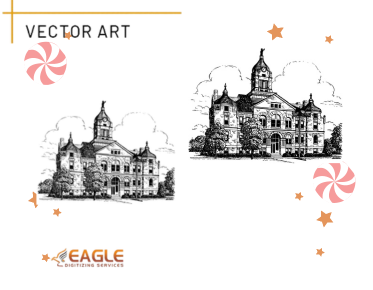Exploring the World of Embroidery Digitizing with BitsnPixs
Embroidery digitizing is a fascinating process that transforms artwork into a digital file that embroidery machines can read. This intricate process requires precision and expertise, and companies like BitsnPixs have mastered the art of providing top-notch digitizing services. Whether you're a small business owner or a large corporation, understanding the nuances of embroidery digitizing can significantly enhance your branding efforts.
At the heart of embroidery digitizing is the software that converts designs into a language that embroidery machines understand. This process involves plotting out the path of the needle, determining stitch types, and ensuring that the final product is both aesthetically pleasing and durable. Companies like BitsnPixs offer a range of embroidery digitizing services that cater to various needs, ensuring that each design is executed with precision and care.
The Process of Embroidery Digitizing
Embroidery digitizing begins with a design, which can be a logo, artwork, or any image that needs to be embroidered. The digitizer uses specialized software to convert this image into a series of commands that the embroidery machine can follow. This involves selecting the right stitch types, such as satin, fill, or run stitches, and determining the stitch density to ensure the design's integrity.
Choosing the Right Software
Choosing the right embroidery digitizing software is crucial for achieving the best results. There are various software options available, each with its own set of features and capabilities. It's essential to select software that aligns with your specific needs and skill level, whether you're a beginner or an experienced digitizer.
Benefits of Professional Embroidery Digitizing
Professional embroidery digitizing offers numerous benefits, including high-quality designs, efficient production, and the ability to replicate designs consistently. By outsourcing digitizing to experts like BitsnPixs, businesses can focus on other aspects of their operations while ensuring that their embroidery needs are met with precision and expertise.
Understanding Stitch Types
Different stitch types serve different purposes in embroidery digitizing. Satin stitches are ideal for borders and text, while fill stitches are used for larger areas. Understanding these stitch types and their applications is crucial for creating designs that are both visually appealing and structurally sound.
Challenges in Embroidery Digitizing
Embroidery digitizing is not without its challenges. Factors such as fabric type, thread tension, and design complexity can all impact the final product. It's essential to work with experienced digitizers who understand these challenges and can adjust their techniques accordingly to ensure the best possible outcome.
Fabric Considerations
The type of fabric used in embroidery can significantly affect the digitizing process. Different fabrics require different approaches to ensure that the design holds up well and looks good. For instance, stretchy fabrics may need additional stabilization, while thicker fabrics might require adjustments in stitch density.
Conclusion
Embroidery digitizing is a complex yet rewarding process that can elevate your brand's visual identity. By partnering with experts like BitsnPixs, you can ensure that your designs are executed with precision and care. Additionally, Eagle Digitizing excels in providing professional embroidery digitizing services, ensuring every design is crafted with unmatched precision. Whether you're new to embroidery or looking to enhance your existing processes, understanding the intricacies of digitizing is key to achieving the best results.
.png)


